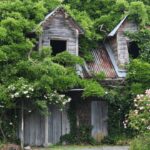Support our educational content for free when you purchase through links on our site. Learn more
Have you ever dreamed of transforming a vacant lot into a lush oasis of fresh vegetables and vibrant flowers? Imagine the joy of harvesting your own tomatoes while bonding with neighbors over shared gardening tips! Starting a small community garden might seem daunting, but it’s easier than you think. In this guide, we’ll walk you through 10 essential steps to create a thriving community garden that not only beautifies your neighborhood but also fosters connections among residents.
Did you know that community gardens can increase property values by up to 9%? That’s right! Not only do they provide fresh produce, but they also enhance the aesthetic appeal of the area. So, grab your gardening gloves and let’s dig into the details!
Key Takeaways
- Gather a dedicated crew: Rally your neighbors to form a committed gardening team.
- Find the perfect plot: Research local zoning laws and secure a suitable location.
- Create a detailed garden plan: Outline the layout and types of plants to grow.
- Establish clear rules: Set guidelines for maintenance and responsibilities.
- Celebrate your harvest: Host community events to enjoy the fruits of your labor together.
Ready to get started? 👉 Shop for essential gardening supplies like tools and seeds to kick off your community garden project! Check out these links for great options:
- Gardening Tools: Amazon | Walmart
- Seeds and Plants: Burpee | Johnny’s Selected Seeds
Table of Contents
- Quick Tips and Facts
- The Roots of Community Gardening: A Brief History
- What Exactly Is a Community Garden?
- The Benefits of Starting a Community Garden
- Essential Steps to Launching Your Community Garden
- Learn More About Gardening: Horticulture Degrees and Resources
- Request Program Information for Community Gardening Initiatives
- Related Stories: Inspiring Community Garden Successes
- Continuing Education: College of Continuing & Professional Studies
- Conclusion
- Recommended Links
- FAQ
- Reference Links
Quick Tips and Facts
To get started with a community garden, it’s essential to understand the purpose of a community garden 🌱, which you can learn more about in our related article: What is the Purpose of a Community Garden?. Here are some quick tips and facts to consider:
- Community gardens can be used to grow a variety of plants, including fruits, vegetables, and flowers.
- These gardens are typically managed by local community members who participate in the maintenance and harvesting of the crops.
- Starting a community garden can have numerous benefits, including providing fresh food, promoting community engagement, and serving as a educational resource.
- Before starting a community garden, it’s crucial to find available land, engage with the community, and establish a plan for the garden’s maintenance and management.
Benefits of Community Gardens
Community gardens offer numerous benefits, including:
- Providing fresh produce to community members
- Promoting community engagement and social interaction
- Serving as an educational resource for teaching about horticulture and sustainability
- Enhancing the aesthetic appeal of the surrounding area
The Roots of Community Gardening: A Brief History

Community gardening has a rich history that dates back to the 19th century. The concept of community gardening emerged as a way to provide fresh produce to urban residents and promote community engagement. Over time, community gardening has evolved to include a wide range of activities, from gardening and education to community building and social activism.
Evolution of Community Gardening
The evolution of community gardening can be attributed to the changing needs and values of urban communities. Today, community gardens are not only a source of fresh produce but also a platform for promoting sustainability, social justice, and community engagement.
What Exactly Is a Community Garden?
A community garden is a shared green space where members of a community come together to grow and maintain a variety of plants, including fruits, vegetables, and flowers. These gardens are typically managed by the community members themselves, who participate in the planning, maintenance, and harvesting of the crops.
Types of Community Gardens
There are several types of community gardens, including:
- Urban community gardens: These gardens are located in urban areas and are often used to provide fresh produce to city residents.
- Rural community gardens: These gardens are located in rural areas and are often used to promote sustainable agriculture and community engagement.
- School community gardens: These gardens are located on school grounds and are used to educate students about horticulture and sustainability.
The Benefits of Starting a Community Garden
Starting a community garden can have numerous benefits, including:
- Providing fresh produce: Community gardens can provide fresh, healthy produce to community members, which can be especially beneficial for low-income families or those with limited access to grocery stores.
- Promoting community engagement: Community gardens can serve as a hub for community activity, promoting social interaction and a sense of community among members.
- Educational opportunities: Community gardens can provide a platform for teaching about horticulture, sustainability, and environmental stewardship.
Community Garden Success Stories
There are many community garden success stories that demonstrate the positive impact of these gardens on local communities. For example, the High Line in New York City is a community garden that has been transformed into a public park, providing a green oasis for city residents.
Essential Steps to Launching Your Community Garden
Launching a community garden requires careful planning and execution. Here are the essential steps to follow:
1. Gather Your Gardening Crew
The first step in launching a community garden is to gather a group of dedicated community members who are passionate about gardening and community engagement. This can be done by:
- Hosting community meetings and events to raise awareness about the garden
- Creating a social media group or online forum to connect with potential gardeners
- Partnering with local organizations and businesses to promote the garden
2. Find the Perfect Plot of Land
The next step is to find a suitable plot of land for the garden. This can be done by:
- Researching local zoning laws and regulations
- Identifying potential sites, such as vacant lots or underutilized public spaces
- Partnering with local landowners or government agencies to secure the land
3. Create a Garden Plan
Once the land is secured, it’s time to create a garden plan. This should include:
- A layout of the garden, including the location of plots, pathways, and other features
- A list of the types of plants to be grown, including fruits, vegetables, and flowers
- A plan for maintaining the garden, including watering, weeding, and pest management
4. Get the Necessary Permissions
Before breaking ground, it’s essential to obtain the necessary permissions and approvals. This may include:
- Obtaining a permit from the local government
- Securing approval from neighboring landowners or residents
- Complying with local zoning laws and regulations
5. Prepare the Soil and Plant Your Seeds
With the plan in place and permissions secured, it’s time to prepare the soil and plant the seeds. This can be done by:
- Testing the soil to determine its pH and nutrient levels
- Amending the soil with organic matter, such as compost or manure
- Planting a variety of seeds, including fruits, vegetables, and flowers
6. Establish Garden Rules and Responsibilities
To ensure the garden runs smoothly, it’s essential to establish clear rules and responsibilities. This can be done by:
- Creating a set of garden rules, including guidelines for watering, weeding, and pest management
- Assigning tasks and responsibilities to garden members
- Establishing a system for resolving conflicts or disputes
7. Maintain and Harvest Together
The final step is to maintain and harvest the garden together. This can be done by:
- Scheduling regular garden workdays and events
- Encouraging garden members to participate in maintenance and harvesting activities
- Celebrating the garden’s successes and addressing any challenges or issues that arise
Learn More About Gardening: Horticulture Degrees and Resources
For those interested in learning more about gardening and horticulture, there are a variety of resources available. This includes:
- Horticulture degrees from universities and colleges
- Online courses and tutorials, such as those offered by Coursera and Udemy
- Gardening books and publications, such as The New Seed Starter’s Handbook by Nancy Bubel
Gardening Communities and Forums
There are also many online communities and forums dedicated to gardening and horticulture. These include:
Request Program Information for Community Gardening Initiatives
For those interested in starting a community garden, there are many programs and initiatives available to provide support and resources. This includes:
- Community Garden Grants from organizations such as the National Gardening Association
- Community Garden Programs from organizations such as the USDA
- Gardening Workshops and training programs from organizations such as The Garden Conservancy
Community Garden Resources
There are also many resources available to support community gardening initiatives. These include:
- Community Garden Toolkits from organizations such as the American Community Gardening Association
- Gardening Guides from organizations such as the National Gardening Association
- Gardening Apps such as Gardening Companion
Related Stories: Inspiring Community Garden Successes
There are many inspiring stories of community garden successes from around the world. These include:
- The High Line in New York City, which has been transformed into a public park and community garden
- The Boston Natural Areas Network, which has established a network of community gardens and green spaces throughout the city
- The Seattle Community Garden Program, which provides support and resources for community gardens throughout the city
Community Garden Events
There are also many community garden events and activities that take place throughout the year. These include:
- Gardening workshops and training programs
- Garden tours and open houses
- Harvest festivals and celebrations
Continuing Education: College of Continuing & Professional Studies
For those interested in continuing their education in horticulture and gardening, there are many programs and courses available. These include:
- Horticulture courses from universities and colleges
- Gardening certificates from organizations such as the National Gardening Association
- Sustainable gardening programs from organizations such as the USDA
Conclusion

Starting a community garden is not just about planting seeds; it’s about cultivating connections, fostering community spirit, and reaping the rewards of fresh produce. 🌱 By following the essential steps outlined in this guide—from gathering your gardening crew to maintaining and harvesting together—you can create a thriving garden that benefits everyone involved.
Positives of starting a community garden include:
- Access to fresh produce: Community gardens provide a sustainable source of fruits and vegetables.
- Community engagement: They foster social interaction and strengthen community ties.
- Educational opportunities: Gardens serve as a platform for learning about horticulture and environmental stewardship.
Negatives might include:
- Initial setup challenges: Securing land and permissions can be time-consuming.
- Ongoing maintenance: Keeping the garden thriving requires commitment from all members.
Despite these challenges, the positives far outweigh the negatives! We confidently recommend diving into the world of community gardening. Not only will you grow delicious food, but you’ll also cultivate friendships and a sense of belonging. 🌼
Recommended Links
-
Gardening Books:
- The New Seed Starter’s Handbook by Nancy Bubel
- The Community Garden Handbook by Jennifer L. McGowan
-
👉 Shop Gardening Supplies:
- Gardening Tools: Amazon | Walmart | Home Depot
- Seeds and Plants: Burpee | Johnny’s Selected Seeds | Etsy
FAQ

What are the benefits of starting a community garden in my neighborhood?
Community gardens offer numerous benefits, including:
- Access to fresh produce: They provide a reliable source of fruits and vegetables, improving food security.
- Social cohesion: Gardens foster relationships among neighbors, creating a sense of community.
- Educational opportunities: They serve as hands-on learning environments for children and adults alike, teaching about gardening, nutrition, and sustainability.
Read more about “🌱 15 Essential Steps to Launch Your Community Vegetable Garden Project in 2025!”
How do I find a suitable location for a community garden in my area?
To find a suitable location:
- Research local zoning laws: Check with your city or county to understand land use regulations.
- Identify potential sites: Look for vacant lots, parks, or school grounds that receive ample sunlight and have access to water.
- Engage with landowners: Reach out to private landowners or local government officials to discuss potential partnerships.
Read more about “How to Start a Thriving Classroom Garden: 25 Expert Tips for 2024! 🌱”
What are the essential steps to organize a community garden from scratch?
The essential steps include:
- Gather a committed group of community members.
- Secure land by researching zoning laws and obtaining permissions.
- Create a garden plan that outlines the layout and types of plants.
- Establish rules and responsibilities to ensure smooth operation.
- Prepare the site and start planting!
How can I engage my community to participate in a local gardening project?
Engaging your community can be achieved by:
- Hosting informational meetings to discuss the benefits of a community garden.
- Creating social media pages to share updates and invite participation.
- Organizing fun events, such as planting days or harvest festivals, to draw in community members.
What are some tips for designing a community garden to maximize space and productivity?
To maximize space and productivity:
- Use raised beds: They improve drainage and can be placed closer together.
- Implement companion planting: Pair plants that benefit each other to enhance growth and deter pests.
- Incorporate vertical gardening: Use trellises for climbing plants to save space.
How do I secure funding and resources for a community garden startup?
Funding can be secured through:
- Grants: Look for community garden grants from organizations like the National Gardening Association.
- Local businesses: Approach nearby businesses for sponsorship or donations of materials.
- Fundraising events: Organize community events like bake sales or plant sales to raise money.
What are some ways to ensure the long-term sustainability of a community garden project?
To ensure sustainability:
- Establish a gardening committee to oversee operations and address issues.
- Create a maintenance schedule to keep the garden in good shape.
- Encourage community involvement through regular events and meetings to keep interest high.
Read more about “10 Ways to Grow Your Community Garden Project: A Complete Guide … 🌱”

